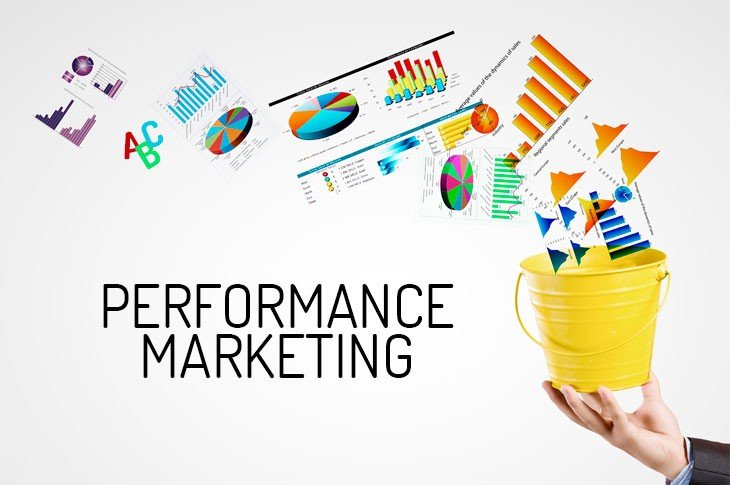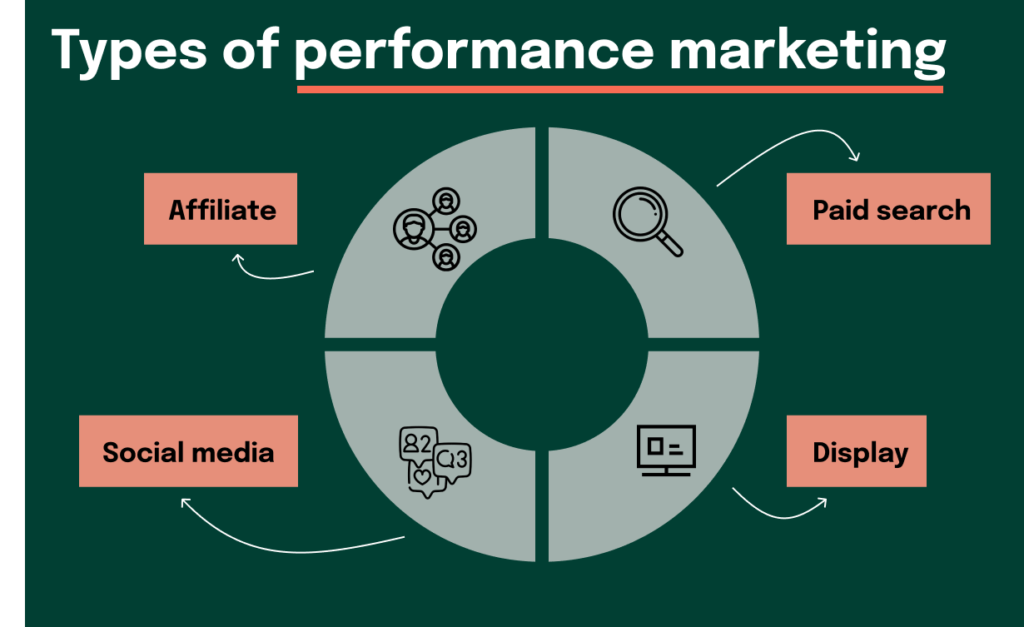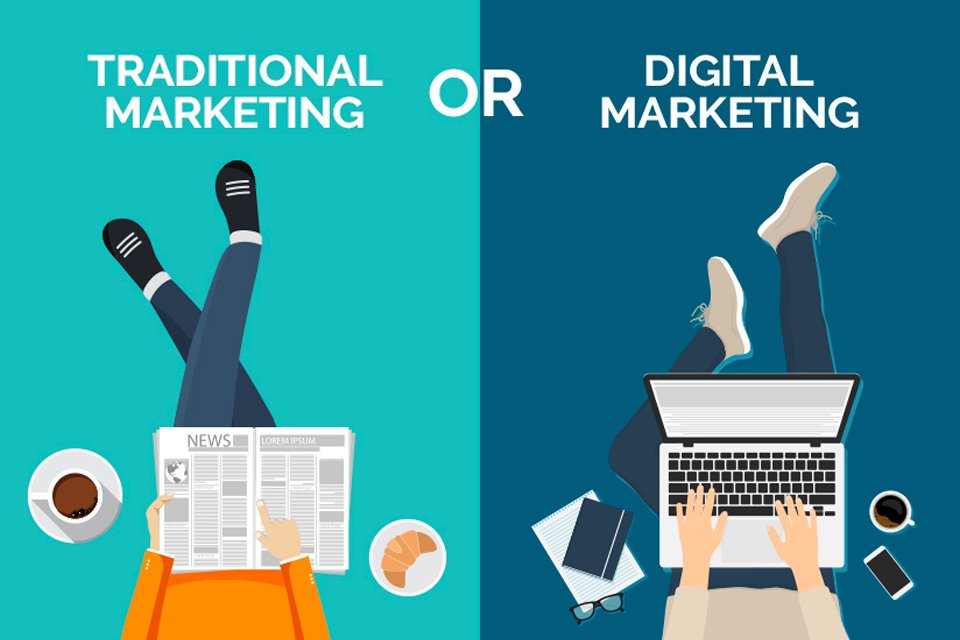In today’s hyper-competitive digital marketplace, businesses can no longer afford to spend marketing dollars without clear accountability. This fundamental shift in marketing philosophy has given rise to Performance marketing meaning – a revolutionary approach where advertisers only pay when specific, measurable actions occur. Unlike traditional marketing methods that rely on vague metrics like “brand impressions,” performance marketing ties every dollar spent directly to tangible business outcomes.
Throughout this comprehensive guide, we’ll explore the true meaning of performance marketing, examine its various models and channels, and provide actionable insights for developing strategies that deliver measurable returns. Whether you’re a marketing professional looking to refine your approach or a business owner seeking more accountable advertising solutions, this deep dive will equip you with the knowledge needed to leverage performance marketing effectively.

Understanding Performance Marketing: Core Principles and Definition
At its essence, performance marketing represents a paradigm shift in how businesses approach customer acquisition and advertising. The fundamental premise is simple yet powerful: marketing expenditures are directly tied to specific, measurable actions rather than potential exposure. This performance-based approach transforms marketing from a cost center to a scalable, predictable revenue driver.
The defining characteristic of performance marketing
Lies in its payment structures. Advertisers only pay when predetermined actions are completed, whether that’s a click, lead, sale, or app installation. This stands in stark contrast to traditional advertising models where payments are made for impressions or placements regardless of performance outcomes. The implications of this shift are profound, creating an environment where marketing success becomes quantifiable and directly tied to business objectives.
Several key principles underpin effective performance marketing strategies.
First is the emphasis on data-driven decision making. Every campaign element, from audience targeting to creative execution, is continuously optimized based on performance metrics. Second is the focus on measurable return on investment (ROI), with clear benchmarks for success established before campaigns launch. Finally, performance marketing thrives on scalability – successful campaigns can be rapidly expanded while underperforming ones are quickly identified and either improved or discontinued.
Industries with direct response models have been particularly quick to adopt performance marketing approaches. E-commerce businesses benefit from pay-per-sale arrangements, financial services leverage cost-per-lead models, and mobile app developers utilize cost-per-install structures. However, the principles of performance marketing are increasingly being adopted across virtually all sectors as digital transformation continues to reshape business operations.

Exploring the Various Types of Performance Marketing Models
The versatility of Performance marketing meaning becomes apparent when examining the diverse range of models available to advertisers. Each model serves distinct business objectives and can be tailored to specific industry requirements. Understanding these variations is crucial for developing a performance marketing strategy that aligns with organizational goals.
Affiliate marketing
Represents one of the most established Performance marketing meaning models. In this arrangement, independent publishers promote products or services and receive compensation only when their efforts result in a sale or lead. The affiliate ecosystem has grown increasingly sophisticated, with networks like Amazon Associates, ShareASale, and CJ Affiliate providing platforms that connect advertisers with relevant publishers. This model particularly benefits e-commerce businesses by expanding their reach through third-party promoters while maintaining strict cost controls.
Pay-per-click (PPC) advertising
Has become synonymous with performance marketing for many businesses. Platforms like Google Ads and Microsoft Advertising allow advertisers to bid for placement in search results, paying only when users click on their ads. The immediacy of PPC makes it ideal for businesses looking to drive targeted traffic quickly, while the granular targeting options ensure marketing dollars are spent reaching the most relevant audiences.
Cost-per-acquisition (CPA)
Marketing takes the performance-based approach a step further by tying payments to completed sales rather than just clicks. This model is particularly valuable for businesses with well-defined conversion funnels and established customer lifetime values. Facebook Lead Ads exemplify this approach, allowing advertisers to pay only when quality leads are generated through form submissions or other conversion actions.
For businesses focused on lead generation rather than direct sales, cost-per-lead (CPL) marketing offers an effective alternative. In this model, payment is triggered when a qualified lead is generated, whether through form completion, phone call, or other predefined action. LinkedIn’s advertising platform has become particularly effective for B2B CPL campaigns, leveraging professional targeting criteria to connect advertisers with decision-makers.
Programmatic advertising
Represents the cutting edge of Performance marketing meaning technology. Through real-time bidding systems and machine learning algorithms, programmatic platforms automate the ad buying process while optimizing for performance metrics. This approach enables advertisers to efficiently reach target audiences across thousands of websites and apps while maintaining strict control over costs and performance.
Native advertising
Blends promotional content seamlessly into the user experience of digital platforms. Unlike traditional display ads that interrupt content consumption, native ads match the form and function of their surrounding environment. Performance-based native advertising, as offered by platforms like Taboola and Outbrain, allows advertisers to pay only when users engage with their content, making it particularly effective for awareness and consideration-stage marketing.
Developing a Results-Driven Performance Marketing Strategy
Creating an effective performance marketing strategy requires careful planning and execution across multiple dimensions. The foundation of any successful campaign lies in clearly defined objectives that align with broader business goals. Whether the aim is driving direct sales, generating qualified leads, or increasing app installations, these objectives must be specific, measurable, and tied to key performance indicators.
Understanding the target audience
In granular detail represents the next critical step in strategy development. Modern analytics tools provide unprecedented insights into customer demographics, behaviors, and preferences. By developing comprehensive buyer personas and mapping customer journeys, marketers can identify the most promising opportunities for performance-based interventions. This audience intelligence informs every subsequent decision, from channel selection to creative execution.
Channel selection
Represents one of the most consequential decisions in performance marketing strategy. The optimal mix depends on factors including target audience characteristics, campaign objectives, and product type. E-commerce businesses often find success combining affiliate marketing with Google Shopping ads, while B2B service providers may achieve better results through LinkedIn advertising and content syndication. The key lies in matching channel capabilities with campaign requirements while maintaining the flexibility to adjust based on performance data.
Landing page optimization
Plays a pivotal role in converting traffic generated through Performance marketing meaning efforts. These dedicated pages must be meticulously designed to guide visitors toward the desired action with minimal friction. Elements like load speed, mobile responsiveness, and clear value propositions significantly impact conversion rates. Continuous testing and refinement through A/B and multivariate testing ensure these pages remain effective as market conditions and consumer preferences evolve.
Measurement and analytics
Form the backbone of any performance marketing strategy. Implementing robust tracking mechanisms through tools like Google Analytics, UTM parameters, and conversion pixels provides the visibility needed to assess campaign effectiveness. Key metrics including cost per acquisition (CPA), return on ad spend (ROAS), and conversion rates serve as the compass guiding optimization efforts and budget allocation decisions.
The iterative nature of performance marketing demands ongoing campaign optimization. Successful strategies involve continuous monitoring of performance data, with underperforming elements being rapidly identified and either improved or discontinued. Conversely, high-performing campaigns should be scaled systematically, with careful attention to maintaining efficiency as budgets increase. This dynamic approach ensures marketing resources are consistently allocated to the most effective channels and tactics.
Performance Marketing Channels: Maximizing Reach and Efficiency
The digital marketing ecosystem offers a diverse array of channels for executing performance-based campaigns, each with unique strengths and applications. Search Engine Marketing (SEM), encompassing platforms like Google Ads and Microsoft Advertising, remains one of the most powerful channels for capturing high-intent traffic. The ability to target users actively searching for relevant products or services creates unparalleled opportunities for conversion. Modern SEM strategies leverage sophisticated bidding strategies and audience targeting options to maximize ROI while maintaining strict control over acquisition costs.
Social media platforms
Have evolved into Performance marketing meaning powerhouses, offering advanced targeting capabilities combined with flexible payment models. Facebook and Instagram’s advertising systems enable advertisers to reach highly specific audience segments while paying only for desired actions. The visual nature of these platforms makes them particularly effective for e-commerce businesses, with features like dynamic product ads and shopping integrations streamlining the path to purchase. LinkedIn’s professional focus provides unique advantages for B2B marketers, allowing precise targeting by job function, seniority, and industry.
Affiliate marketing networks
Continue to play a vital role in performance marketing strategies by extending brand reach through third-party publishers. These networks range from broad-based platforms like Rakuten Advertising to specialized vertical marketplaces. The performance-based nature of affiliate relationships makes them particularly attractive for risk-averse advertisers, while the diversity of publisher types – from content creators to coupon sites – allows for creative campaign approaches. Effective affiliate program management involves careful publisher selection, competitive commission structures, and ongoing performance monitoring.
Programmatic advertising
Has transformed display advertising into a performance-driven channel. Through real-time bidding systems and machine learning optimization, programmatic platforms enable advertisers to reach target audiences across thousands of websites while maintaining strict control over costs and performance. Advanced targeting options, including lookalike modeling and retargeting, enhance campaign effectiveness. The automation inherent in programmatic buying reduces operational overhead while improving campaign efficiency through continuous optimization.
Email marketing
When approached with a performance mindset, remains one of the most cost-effective digital channels. Performance-based email strategies focus on measurable outcomes, whether that’s click-through rates, conversion rates, or revenue generated. Modern email service providers offer sophisticated segmentation and automation capabilities, allowing for highly personalized communications at scale. The integration of email with other performance channels creates powerful omnichannel marketing sequences that guide prospects through the customer journey.
Influencer marketing
Has emerged as a performance channel bridging the gap between organic and paid media. Performance-based influencer arrangements tie compensation directly to measurable outcomes like sales or leads, often tracked through unique promo codes or affiliate links. This approach combines the authenticity of influencer endorsements with the accountability of performance marketing. Micro-influencers in particular have proven effective for targeted performance campaigns, offering high engagement rates within niche audiences.

Performance Marketing vs. Traditional Digital Marketing: Understanding the Differences
While performance marketing falls under the broader umbrella of digital marketing, it differs fundamentally from traditional approaches in several key aspects. The most significant distinction lies in the payment model and associated risk allocation. Performance marketing operates on a pay-for-performance basis, with advertisers only spending money when predefined actions occur. This contrasts with traditional digital marketing approaches where payments are made for placements regardless of outcomes.
The table below summarizes these key differences:
| Factor | Performance Marketing | Traditional Digital Marketing |
| Payment Model | Pay only for results (CPA, PPC) | Pay for impressions (CPM) or fixed budgets |
| Primary Goal | Direct conversions & ROI | Brand awareness & engagement |
| Measurability | Highly trackable (ROAS, CPA) | Harder to attribute direct sales |
| Examples | Affiliate marketing, PPC ads | SEO, organic social media, blog content |
The choice between these approaches depends largely on business objectives and context. Performance marketing excels when the priority is driving measurable, short-term results with clear ROI. It’s particularly effective for direct response scenarios like e-commerce sales, lead generation, and app installations. Traditional digital marketing remains valuable for long-term brand building, establishing market authority, and nurturing customer relationships over extended periods.
Savvy marketers recognize that these approaches are not mutually exclusive but rather complementary. The most effective digital marketing strategies often combine performance marketing for immediate results with traditional methods for sustained growth. The balance between these approaches should reflect business priorities, market conditions, and the specific characteristics of the target audience.
Conclusion: Harnessing the Power of Performance Marketing
Performance marketing represents a fundamental shift in how businesses approach digital advertising, offering unprecedented levels of accountability and efficiency. By tying marketing expenditures directly to measurable outcomes, organizations can optimize their customer acquisition efforts with surgical precision. The flexibility of performance models – from pay-per-click to cost-per-acquisition – allows for customization based on specific business needs and industry dynamics.
As digital marketing continues to evolve, performance-based approaches will likely become even more sophisticated. Advances in artificial intelligence and machine learning are already enhancing targeting capabilities and optimization algorithms. The growing emphasis on privacy and data protection is shaping new approaches to measurement and attribution. Businesses that stay at the forefront of these developments will be best positioned to capitalize on the opportunities performance marketing.